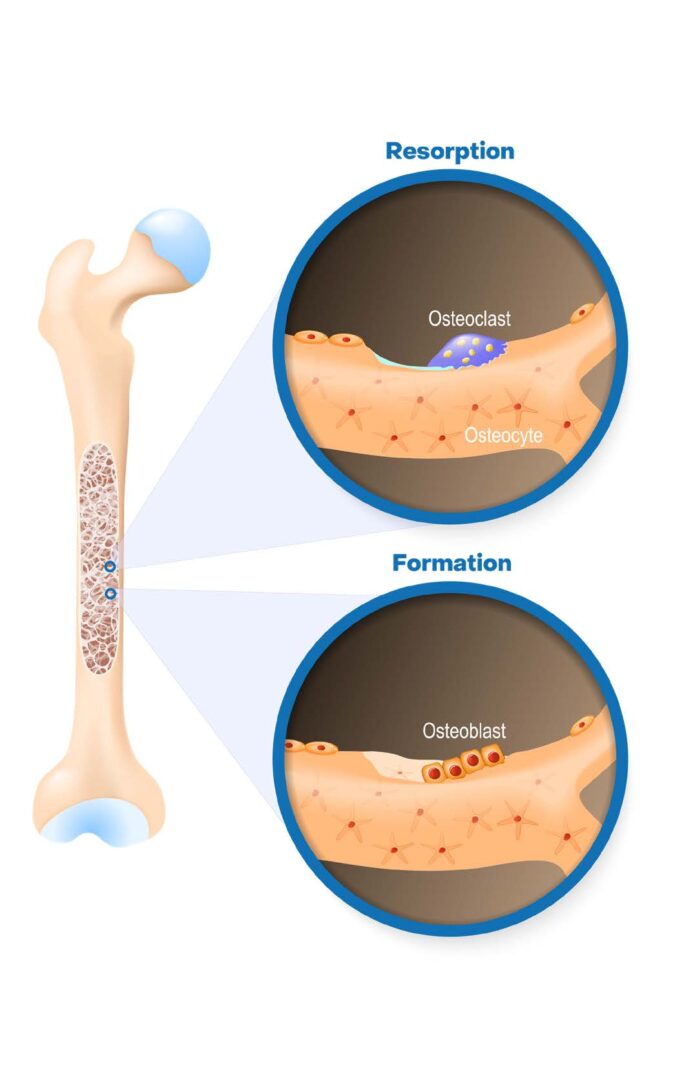Anson Bautista, MD, Justin Reyes, MS, Zeeshan Sardar, MD
Columbia University Och Spine Hospital at New York-Presbyterian/Allen
Bone health is an essential component of overall well-being. The skeleton not only offers support and protection but also enables vital physiological functions that are essential for our everyday lives. This article explains the intricate world of bone health and explores the functions of the skeleton and the role of calcium metabolism. Maintaining optimal bone health is a multifaceted process involving genetics, age, and nutrition, and highlights the importance of an active lifestyle. Basically, the skeleton has three major functions: structural support, blood formation and maintaining calcium metabolism.

Three Major Functions
The primary function of the skeleton is to provide structural support serving as the body’s foundation. It acts as a safeguard for vital organs, such as the brain and heart. The bones, along with the joints, play a pivotal role in facilitating movement by providing a sturdy and resilient framework that allows us to stand, ambulate, and engage in various physical activities. The spine is the central pillar, supporting the body’s weight and maintaining an upright posture.
The second major function of the skeleton is to provide the necessary reservoir for hematopoiesis – the production of blood cells. The bone marrow is the site for the formation of red blood cells, white blood cells, and platelets. This hematopoietic reserve ensures a continuous supply of blood cells necessary for oxygen transport, immunological response, and blood clotting.

The third major function of the bone is the regulation of calcium metabolism. The physiology of bones is a dynamic and continuous process involving a delicate balance between bone formation and resorption. Osteoblasts, specialized cells responsible for bone formation, synthesize the bone matrix and contribute to its mineralization. In contrast, osteoclasts, cells involved in bone resorption, break down bone tissue, releasing minerals into the bloodstream. This balance ensures that bones can adapt to the changing needs of the body.
Calcium is vital in maintaining healthy bone quality and is intricately involved in many of the body’s important physiological processes. Our bones serve as a reservoir, maintaining a precise calcium equilibrium within the bloodstream that is regulated by the parathyroid gland hormones. The body stimulates bone to release or absorb calcium, causing the calcium levels in the blood to rise or fall.
Proper calcium metabolism is essential for maintaining bone health throughout life. Insufficient calcium intake or impaired calcium metabolism can lead to a condition known as osteoporosis, characterized by weakened and fragile bones. This condition significantly increases the risk of fractures, which can be devastating later in life, and compromises overall skeletal integrity.
Bone Health Influencers
The health of our bones is influenced by a combination of genetic and environmental factors. Bone density tends to deteriorate with age, and fracture risk rises. Women are more likely to experience this phenomenon because of hormonal changes that impact calcium metabolism, particularly during and after menopause. Genetic predisposition also plays a role in bone health, as some individuals have a tendency to conditions such as osteoporosis. Understanding one’s genetic predisposition can help in adopting proactive strategies and timely interventions aimed at preserving optimal bone health.
Peak bone mass is typically reached during early adulthood, which emphasizes the importance of building strong bones during childhood and adolescence. But it is never too late to begin incorporating bone healthy habits into your life! Adequate calcium intake, along with sufficient vitamin D3 levels, phosphorus, magnesium, and other micronutrients, is crucial for optimal bone mineralization. Smoking cessation and avoiding any nicotine intake is important for improving bone health at any age. Lifelong physical activity that includes weight-bearing exercises promotes bone formation by stimulating osteoblast activity.
However, a sedentary lifestyle or conditions that lead to hormonal imbalances can tip the balance toward increased bone resorption, compromising bone health.

Take Home Message
In conclusion, our bones are amazing, and dietary intake, genetics, nicotine, alcoholism, chronic illnesses, and other physiological processes intricately interact to determine bone health. Make a point to discuss your bone health during the next physical with your healthcare provider. They should have a thorough understanding of bone physiology and the importance of appropriate treatment regimens that are paramount to help you maintain optimal bone health throughout life.
Embrace a proactive approach that includes a balanced diet, regular exercise, lifestyle changes, and awareness of your family history of osteoporosis. Individuals can take significant steps toward preserving the strength and integrity of their bones by investing in their own bone health, thus improving their overall well-being and quality of life.



